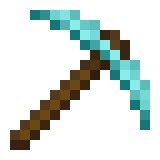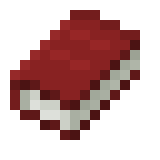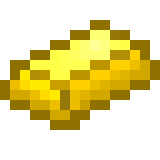Reviewer: John B.
Developer: Idea Factory/Compile HeartPublisher: Idea Factory (NA) | Ghostlight (EU & AU)
Category: RPG
Release Date: 01.17.19
Price (at time of review): $39.99
Buy Fairy Fencer F: Advent Dark Force from the Nintendo eShop here.
If you’re going to make a JRPG, you could do worse than cribbing a few elements from the most successful JRPG franchise of all time; Final Fantasy. Idea Factory and Compile Heart took this idea to heart, snagging both legendary artist Yoshitaka Amano and even more legendarier composer Nobuo Uematsu away from Squenix in 2013 to launch the original Fairy Fencer F. That game was updated and re-released on the PS4 as Fairy Fencer F: Advent Dark Force, featuring updated graphics, some rebalancing, new story branches, and a whole bunch of DLC. The good news (and in some ways less good, but we’ll get to that) is that the Switch version comes standard with all the DLC. The Switch has had its fair share of major JRPGs since launch (Octopath, Xenoblade, Vesperia Remake, etc), but if you’re a fan of the genre, do yourself a huge favor and make sure you don’t miss this one.

War Between Ancient Gods, Fairies, Magic Weapons, Etc…
The story isn’t anything you haven’t seen before in a JRPG. In ancient times, a benevolent goddess and a maleficent god went to war over the fate of the world. At the end of their long battle they were sealed away by magical weapons known as Furies. Furies are powered by their bonds with fairies, who lend their abilities to the Furies’ wielders, Fencers. A Fury chooses its own wielder, without any input from the fairy bonded to it. Fencers are intensely powerful beings as a result, earning them the attention desire of the mega-corporation Dorfa. Dorfa present themselves as a benevolent force, but when have the phrases “mega-corporation” and “benevolent” ever coexisted?
Enter Fang, an epic slacker and bearer of an awesome anime jacket. Fang wanders into a town that has a Fury no one has been able to pull from its stone and wield. Local legend has it that the one who pulls the Fury from the stone will be granted their fondest wish. In a “shocking” turn of events, Fang is chosen by the Fury, but instead of the free meal he was hoping for, he gets the worst possible alternative; WORK. Eryn, the fairy in his Fury, asks him to help her gather the rest of the Furies to free the goddess from her prison and help regain Eryn’s lost memories. Against his lazier judgement, Fang agrees to help Eryn recover her past, and along the way they meet a colorful, crazy cast of characters who both join and oppose them in their quest.
Fairy Fencer F’s story isn’t especially original, but that’s OK. The characters are largely anime/JRPG stereotypes that you’ve probably seen before, but that’s OK too. Everything about the game is bursting with personality and fun which more than makes up for the standard setup of the narrative. From Fang’s intense devotion to avoiding work and responsibility, to the mysterious assassin who can only say “Kill!” and has to have her fairy partner translate her words, the characters are so likeable and the writing is so sharp that you’ll barely even notice you’ve seen bits of the story elsewhere before. The only thing that might put someone off is the prevalence of fanservice. During the visual novel-style cutscenes, character portraits have only two points of animation. For all characters, the mouths move with the Japanese voice-acted dialogue. For female characters… umm… there are certain parts of the female anatomy that… uhh… well, it’s not as bad as Dead or Alive, at least. Let’s leave it at that.

Fencing For Furies, Wherever There’s Trouble, Over Land (Not Sea) and Air!
Fairy Fencer F has a pretty cool battle system. It reminds me a lot of the Tales series, except turn-based. For anyone familiar with the Hyperdimension Neptunia series, it’s pretty much just that battle system with the addition of air combos. On your turn, you maneuver your character around the battlefield, and once you’re in position you can issue your commands. There are the standard RPG actions like attacking, using items, casting magic or skills, and guarding. Every action has a range, too, so if you’re not close enough to a target for a certain action you have to either guard or go with something else. Guarding has the bonus effect of speeding up your next turn, too, so it’s not a total waste of a turn. The turn order is displayed on the side of the screen, so it’s important to incorporate that into your battle plan.
Standard attacks get more interesting as the game goes on thanks to the game’s combo system. As you progress through the game, you have option to add up to three attacks to a combo, for a total of four different attacks. There are three types of attacks; a standard attack, a launcher attack to launch enemies into the air, and an air attack to pursue launched enemies. Air attacks can still be used on the ground, but they do extra damage in the air. It adds a pretty dynamic visual and tactical element to the game.
Each of your characters has a Tension meter over their character portrait; as you fill up the meter, your attacks get stronger. When the meter turns green, the option to Fairize appears on your action list. When you Fairize, an awesome animation with a great J-Pop rock song plays and your character’s fairy partner turns into cool anime armor that you wear for as long as the Tension meter is full enough. When you’re Fairized, your stats shoot way up and you have access to your most powerful spells and skills. Also, that rockin’ J-Pop song plays the whole time you’re Fairized.

Finally, every character has their own special ability that unlocks after you’ve progressed through a few dungeons. Fang, for instance, puts on his Serious Face, which allows him to seriously boost his normal attacks in exchange for using SP whenever he attacks. The party healer Tiara can erect a powerful barrier around herself… but only herself. Scatter-brained archaeologist Harley can analyze enemies for weaknesses. Reformed bandit Galdo can use his Wild Swing to double his attack power while halving his accuracy. The list goes on, but you get the idea. Not every character specific ability is equally useful; some aren’t useful at all, really, but it adds a degree of variety to the combat which made the game a little more fun than it already was. Even without that, the combat is fast, fun, and never drags. Every attack is skippable; so you never have to sit through those super-long boss attack animations if you don’t want to. You don’t even have to sit through the short ones when you’re level grinding.
Fencing Gear
Like all RPGs, the main way to get stronger in Fairy Fencer F is to gain levels. You get experience from fights, and when you hit certain amounts of exp you level up. Basic Stuff. You also gain Weapon Points (WP), which you can use to upgrade your characters’ Furies. You can unlock new attacks and skills, increase your stats, and lengthen your combo chain with WP to grow your characters to suit your play style. Each character only has one weapon, their Fury, but you can equip one piece of armor and one accessory to each character. You can also equip costumes and ornaments, but those are purely aesthetic changes. Each character also has a list of challenges to complete; completing a level of a challenge will grant a small boost to one stat.
Finally, throughout the story you will collect and/or rescue different Furies during your adventures. The fairies bonded with those Furies will lend you their power in return for helping them. Each of your characters can equip one fairy. Fairies are largely like any other piece of equipment, they increase your stats by a certain amount. Fairies gain levels as well, and the stat increases they grant increase as their level goes up. Every fairy also has special abilities they confer to their bearer; from increasing elemental resistance/power to increasing exp gained, fairy abilities are among the most useful boosts your character can get.

Boldly Going Where Your Party Members Force You To Go
Dungeon crawling is the key exploration element of gameplay in Fairy Fencer F. You select a dungeon from the world map and your party enters it. Early on the dungeons are accessible without any special action required on the part of the player. Eventually, you will need to use an ability called World Shaping to open the dungeons you discover. The main story revolves around using collected Furies to free the goddess from her imprisonment; you can bond one of your fairies to an ancient Fury binding the goddess (or the malevolent god she was fighting) in order to grant that fairy a World Shaping skill. Each Fury will grant two World Shaping effects. The goddess usually grants one useful ability and one detrimental ability; if one skill increases the amount of experience gained, the other will reduce physical defense, for instance. The Furies holding the god, on the other hand, only have positive abilities. You can choose to weaken his bindings, as well… but… y’know… unleashing an evil god and all. Not the best idea. Anyway, each Fury can only shape one dungeon at a time, but you can remove Furies and bind them to new dungeons whenever you want.
Side Stuff
Fairy Fencer F also features a number of side activities. They’re fairly standard for the RPG genre. The item shop also has a synthesize feature, for instance, that allows you to take items and equipment you have collected and turn them into much better items and equipment. There is a tavern in the main city (there is only one city) where the tavern owner will give you side quests. They either fall into the standard fetch quest or “kill X amount of enemy Y” format, so they’re not that interesting. But it’s an easy way to make money and get some free items. You can also buy intel from an adorable information broker on where to find optional Furies. Again, it’s all pretty standard stuff, but it adds some variety and meat to the game, extending the gameplay time without feeling too bloated.
Unlocked DLC
I said in the intro that all the DLC is included in the Switch version; I also said this was a mixed blessing, depending on how you want to play. The DLC includes some ultra-high level armor and fairies, using which will really, really, REALLY destroy any sense of challenge in the game. I used it for review purposes for a while to cover a lot of the game in a shorter time; I was ten dungeons in before I met an enemy strong enough to actually damage me. Certainly if you just want to enjoy the story and/or feel like a total invincible badass it’s not a problem, but if part of the reason you play games is to feel challenged, you might consider not using any of the DLC items until you get to the later game. The DLC also includes some bonus dungeons, and you will DEFINITELY want to use the best items and fairies you can for those. They’re tough.

The Masters At Work
Almost nothing about this game’s art direction let me down. The character designs are from the tag-team of Yoshitaka Amano and longtime Idea Factory contributor Tsunako. I don’t know which one of them designed Fang’s jacket, but they did a damn fine job. Oh, and the rest of the characters and fairies and such have pretty cool designs, too, but… that jacket, though. The narrative parts of the game occur in visual novel-style cutscenes, and the character portraits all have very well-drawn, high-def artwork with some minimal animation, which I’ve already been over. The dungeon crawling aspects of the game look… less good, but still presentable. The game was originally released on the PS3, and while the graphics were supposedly updated, they still look a generation old. The graphics (again, only when dungeon-crawling, the VN aspects look great) look especially fuzzy if you play in handheld mode.
It goes without saying that any game with Nobuo Uematsu’s involvement sounds great. I’m saying it anyway; this game sounds great. It doesn’t use as many orchestral arrangements as you might expect from an Uematsu RPG soundtrack. It uses some, but it also mixes in a healthy dose of rock and electronic elements. The aforementioned Fairize battle music is a personal fave; what can I say? Running around kicking ass and taking names with a J-Pop song blaring in the background makes me feel like I’m living an anime fight. It’s a good feeling. The game’s main story is fully voice acted in both English and Japanese, so you can take your preference there. They’re both fine choices, although the English track sounds like it inexplicably turns Galdo Canadian, eh.
Fairy Fencer A+
If you like JRPGs, Fairy Fencer F: Advent Dark Force is a game you can’t miss. If you like awesome anime-inspired character designs and story tropes,Fairy Fencer F: Advent Dark Force is a game you can’t miss. If you like innovative RPG battle systems that give you plenty of flash and style but let you trim the fat whenever you want, Fairy Fencer F: Advent Dark Force is a game you can’t miss. If you made it this far into this review and you still haven’t made up your mind about it, FAIRY FENCER F: ADVENT DARK FORCE IS A GAME YOU CAN’T MISS! As long as some pretty prevalent fanservice doesn’t bother you, that is.
Score: 10/10
Buy Fairy Fencer F: Advent Dark Force from the Nintendo eShop here.
Follow Idea Factory
Follow Compile Heart
Follow Ghostlight
*Review Code Provided by Ghostlight
Categories
Recent Posts
Tags
#Broforce #dev #DRIVE #FE #indie #indies #Kickstarter #kickstarter #Minit #nindies #Nindies #Nintendo #NintendoSwitch #Owlboy #RaceDieRun #Switch #SwitchCommunity #switchcorps #SwitchCorps #SwitchCorps #Switchiversary #SwitchLewd #SwitchLewds #Switchruary #Twitch #videogames #VitaIsland #YouTube




Leave a Reply